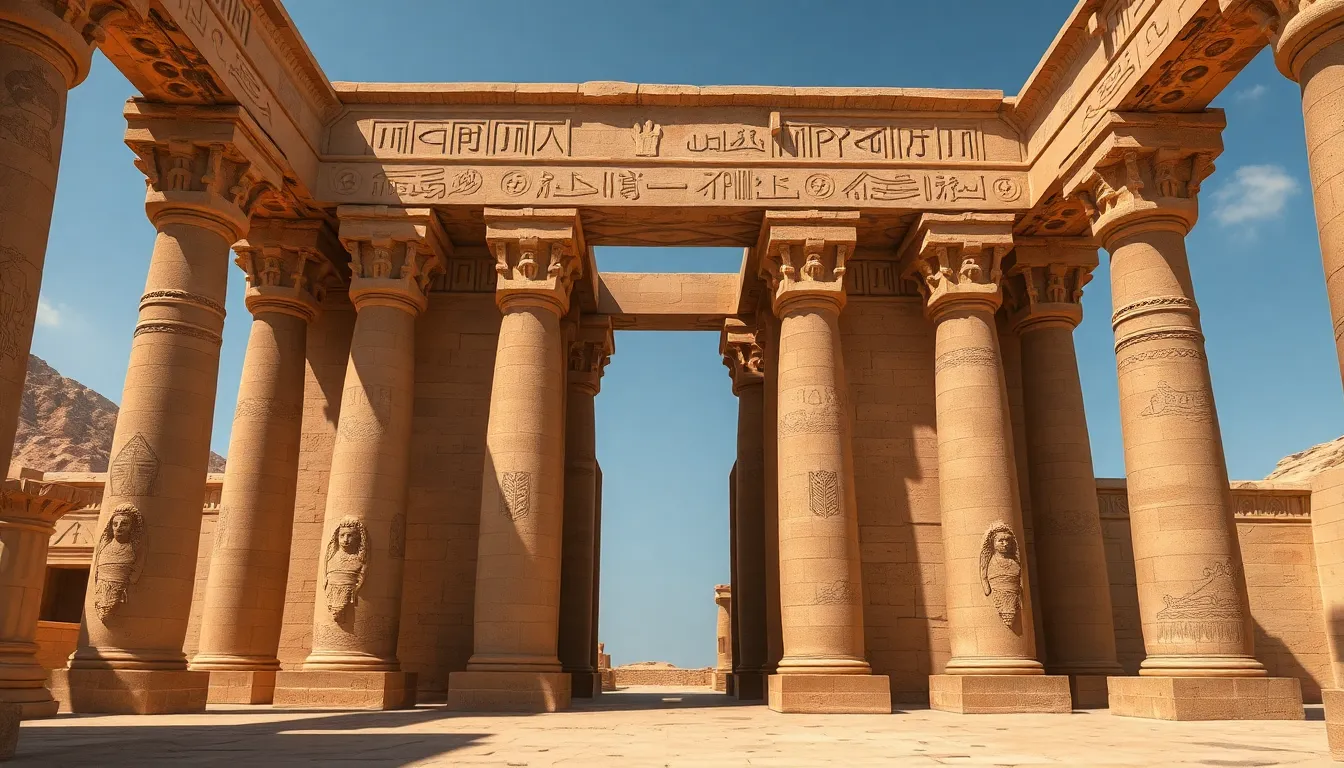The Spiritual Significance of Sacred Architecture in Ancient Egypt
1. Introduction to Sacred Architecture in Ancient Egypt
Sacred architecture refers to the construction of buildings and structures that hold religious significance, serving as places of worship, ritual, and community gathering. In the context of Ancient Egypt, it played a pivotal role in expressing the civilization’s profound religious beliefs and values. The Ancient Egyptians held a polytheistic worldview, believing in a multitude of gods and goddesses who influenced every aspect of life and death. Sacred architecture was not merely functional; it was a physical manifestation of their spiritual ideals and the divine order they sought to uphold.
2. The Role of Temples in Ancient Egyptian Religion
Temples were the epicenters of religious life in Ancient Egypt, serving as the primary places of worship and the abode of the gods. Major temples, such as Karnak and Luxor, were grand structures that showcased the civilization’s architectural prowess and dedication to their deities.
- Karnak Temple: Known for its vast size and complex layout, Karnak was dedicated primarily to the god Amun-Ra and features the impressive Great Hypostyle Hall.
- Luxor Temple: This temple is celebrated for its stunning sculptures and the alignment with the annual Opet Festival, which honored the god Amun.
Temples were viewed as the dwelling places for the gods, where priests conducted daily rituals to appease them. These rituals included offerings, prayers, and festivals that reinforced the connection between the divine and the earthly realm. The temple walls were adorned with intricate carvings and hieroglyphs that depicted these sacred activities, serving as a narrative of devotion and piety.
3. Symbolism in Architectural Design
The design of Ancient Egyptian architecture is rich with symbolism, reflecting the civilization’s spiritual beliefs. Common elements include:
- Obelisks: Tall, four-sided monuments topped with pyramidal shapes, representing the sun’s rays and serving as a connection to the gods.
- Pylons: Monumental gateways marking the entrance to temples, symbolizing the transition from the earthly to the divine.
The alignment of these structures with celestial bodies was meticulously calculated, emphasizing their connection to the cosmos. The use of specific proportions and geometric patterns in their design was believed to convey deep spiritual concepts, reflecting the harmony of the universe.
4. The Relationship Between Architecture and the Afterlife
The afterlife held immense significance in Ancient Egyptian belief, with tomb architecture playing a crucial role in ensuring a successful journey to the next world. Structures such as pyramids and mortuary temples were designed to facilitate this spiritual transition.
- Pyramids: Monumental tombs built for pharaohs, symbolizing their ascension to the heavens. The Great Pyramid of Giza remains a testament to this architectural feat.
- Mortuary Temples: These were adjacent to pyramids and served as places for the cult of the deceased, where rituals were performed to honor the dead.
The design of these tombs was not only functional but also symbolic, as they were believed to be gateways to the afterlife, ensuring the deceased’s immortality and continued existence among the gods.
5. Sacred Space and Community Worship
Sacred architecture also played a significant role in fostering community worship and social cohesion. Temples served as gathering places for festivals, rituals, and communal events that reinforced social identity and religious devotion.
- Festivals: Events such as the Opet Festival involved processions, music, and dance, bringing communities together to celebrate their faith.
- Rituals: Daily rituals conducted by priests engaged the community, allowing them to participate in the worship of the gods.
These sacred spaces were instrumental in creating a sense of belonging and shared identity among the people, illustrating the profound connection between architecture and social life in Ancient Egypt.
6. Influence of Sacred Architecture on Art and Culture
The grandeur of sacred architecture inspired a multitude of other art forms, including sculpture and painting. The interplay between architectural features and religious iconography is evident in the art that adorned temples and tombs.
- Sculpture: Statues of gods, goddesses, and pharaohs often adorned temple precincts, serving both decorative and devotional purposes.
- Painting: Wall paintings within tombs and temples depicted religious scenes, emphasizing the connection between the physical and spiritual worlds.
The legacy of Ancient Egyptian sacred architecture can be seen in later civilizations, influencing architectural styles and religious practices throughout history.
7. Preservation and Modern Interpretation of Sacred Architecture
In contemporary times, there are ongoing efforts to preserve Ancient Egyptian sacred sites, recognizing their historical and cultural significance. Modern interpretations of ancient designs can also be observed in contemporary architecture and spiritual practices.
- Preservation Efforts: Organizations and governments work to protect sites like the temples of Karnak and Luxor from environmental and human threats.
- Modern Adaptations: Elements of ancient Egyptian architecture can be seen in modern spiritual spaces, reflecting a continued reverence for these ancient designs.
The influence of Ancient Egyptian architecture persists, inspiring contemporary artists and architects who seek to connect with the spiritual and historical narratives of the past.
8. Conclusion: The Enduring Legacy of Sacred Architecture in Ancient Egypt
The study of sacred architecture in Ancient Egypt reveals deep insights into the civilization’s spiritual significance. From the grand temples that housed their gods to the intricate tombs designed for the afterlife, architecture was a vital expression of their beliefs and values. The impact of this architectural legacy continues to resonate in modern spirituality, reminding us of the importance of understanding history through the lens of architecture.
As we reflect on the enduring legacy of Ancient Egyptian sacred architecture, we recognize its role in shaping not only the religious landscape of its time but also its influence on future generations. The beauty and complexity of these structures invite us to explore the profound connections between space, spirituality, and community.




